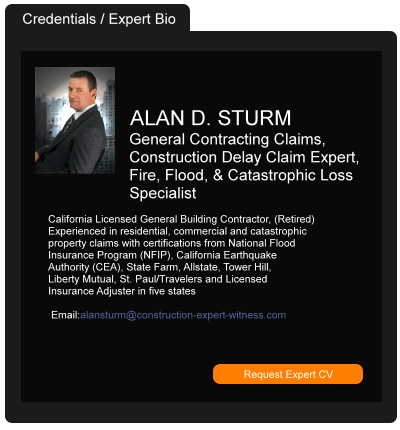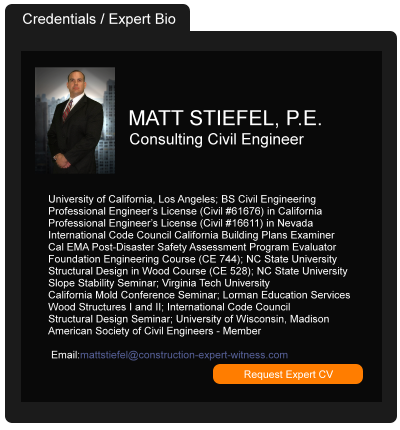Woodbridge II and the Nuanced Meaning of “Adverse Use” in Hostile Property Rights Cases in Colorado
November 23, 2020 —
Luke Mecklenburg - Snell & Wilmer Real Estate Litigation BlogEarlier this year, the Colorado Court of Appeals issued an opinion addressing at length “whether the requirement that the use be ‘adverse’ in the adverse possession context is coextensive with adverse use in the prescriptive easement context.” See Woodbridge Condo. Ass’n, Inc. v. Lo Viento Blanco, LLC, 2020 COA 34 (Woodbridge II), ¶ 2, cert. granted, No. 20SC292, 2020 WL 5405376 (Colo. Sept. 8, 2020). As detailed below, the Woodbridge II court concluded that the meanings of “adverse” in these two contexts are not coextensive—while “hostility” in the adverse possession context requires a claim of exclusive ownership of the property, a party claiming a prescriptive easement is only required to “show a nonpermissive or otherwise unauthorized use of property that interfered with the owner’s property interests.” Thus, the Woodbridge II court reasoned a claimants’ acknowledgement or recognition of an owner’s title alone is insufficient to defeat “adverse use” in the prescriptive easement context.
This significant ruling is at odds with a prior division’s broad statement, while considering a prescriptive easement claim, that “[i]n general, when an adverse occupier acknowledges or recognizes the title of the owner during the occupant’s claimed prescriptive period, the occupant interrupts the prescriptive use.” See Trask v. Nozisko, 134 P.3d 544, 553 (Colo. App. 2006). Perhaps for that reason, Woodbridge II is currently pending certiorari review before the Colorado Supreme Court in a case that should provide some much-needed clarity on what constitutes “adverse use” in the context of a prescriptive easement. As we await the Colorado Supreme Court’s decision, I thought it worthwhile to provide a brief analysis of the Woodbridge II court’s deep dive into the nuances of “adverse use” in this field of Colorado law.
Read the court decisionRead the full story...Reprinted courtesy of
Luke Mecklenburg, Snell & WilmerMr. Mecklenburg may be contacted at
lmecklenburg@swlaw.com
Why Is California Rebuilding in Fire Country? Because You’re Paying for It
March 14, 2018 —
Christopher Flavelle – BloombergAfter last year’s calamity, officials are making the same decisions that put homeowners at risk in the first place.
At the rugged eastern edge of Sonoma County, where new homes have been creeping into the wilderness for decades, Derek Webb barely managed to save his ranch-style resort from the raging fire that swept through the area last October. He spent all night fighting the flames, using shovels and rakes to push the fire back from his property. He was even ready to dive into his pool and breathe through a garden hose if he had to. His neighbors weren’t so daring—or lucky.
On a recent Sunday, Webb wandered through the burnt remains of the ranch next to his. He’s trying to buy the land to build another resort. This doesn’t mean he thinks the area won’t burn again. In fact, he’s sure it will. But he doubts that will deter anyone from rebuilding, least of all him. “Everybody knows that people want to live here,” he says. “Five years from now, you probably won’t even know there was a fire.”
As climate change creates warmer, drier conditions, which increase the risk of fire, California has a chance to rethink how it deals with the problem. Instead, after the state’s worst fire season on record, policymakers appear set to make the same decisions that put homeowners at risk in the first place. Driven by the demands of displaced residents, a housing shortage, and a thriving economy, local officials are issuing permits to rebuild without updating building codes. They’re even exempting residents from zoning rules so they can build bigger homes.
Read the court decisionRead the full story...Reprinted courtesy of
Christopher Flavelle, Bloomberg
Structural Engineer Found Liable for Defects that Rendered a Condominium Dangerously Unsafe
June 22, 2016 —
Paul R. Cressman, Jr. – Ahlers & Cressman Construction Law BlogOn May 3, 2016, the Washington State Court of Appeals affirmed a jury’s verdict in favor of a condominium HOA against a structural engineer for $1,149,332 in damages.[1]
The project in question was The Pointe, an upscale condominium building in Westport, Washington. The developer was Dodson-Duus, LLC. The architect was Elkins Architects (“Elkins”). The structural engineer was Engineers Northwest, Inc. (“ENW”). ENW contracted with Elkins for the structural engineering work.
Birds flying past 3 construction cranesBoth the design and construction of the building suffered from defects. In particular, the lateral force resistance system was insufficient to withstand a large seismic event. The defects included improperly nailed shear walls, weak connections between shear walls and floor joists, improperly-sized floor sheathing, a weak second-floor diaphragm, and omitted hold-downs connecting shear walls to a steel beam. The use of gypsum sheathing also created a risk of corrosion to the building’s steel structure. Evidence tied each of these defects to some aspect of ENW’s structural calculations and designs. Evidence also tied omission of the hold-downs to the contractor’s construction decisions.
Read the court decisionRead the full story...Reprinted courtesy of
Paul R. Cressman, Jr., Ahlers & Cressman PLLC Mr. Cressman may be contacted at
pcressman@ac-lawyers.com
N.J. Appellate Court Confirms that AIA Construction Contract Bars Insurer's Subrogation Claim
September 10, 2019 —
Saxe Doernberger & Vita, P.C.On April 4, 2019, the Appellate Division of the New Jersey Superior Court confirmed that the waiver of subrogation provision in a commonly used form construction contract, American Institute of Architects (AIA) form A201 — 2007 General Conditions of the Contract for Construction, precluded an insurer’s claims against a subcontractor.
In Ace American Ins. Co. v. American Medical Plumbing, Inc., the court considered Ace American Insurance Company’s (Ace) subrogation claim against a plumbing subcontractor who was allegedly responsible for a water main leak that caused approximately $1.2 million in damages to Ace’s insured, Equinox Development Corporation (Equinox).
In March 2012, Equinox entered into a contract with Grace Construction Management Company, LLC (Grace) to build the “core and shell” of a new health club. Equinox and Grace used AIA form A201 for their contract. Grace then hired American Medical Plumbing, Inc. (American) as a plumbing subcontractor for the project. In April 2013, the water main failed, flooding the health club.
Read the court decisionRead the full story...Reprinted courtesy of
Saxe Doernberger & Vita, P.C.Saxe Doernberger & Vita, P.C. may be contacted at
coverage@sdvlaw.com
Chattanooga Bridge Collapse Likely Resulted From Impact
April 17, 2019 —
Jim Parsons - Engineering News-RecordTennessee highway officials believe an impact from a vehicle’s oversized load is likely to blame for the April 1 partial collapse of a ramp structure at the I-75/I-24 interchange in Chattanooga. The impact caused the outer box beam and railing of the 148-ft-long bridge’s nearly 51-ft main span to fall onto an access ramp, injuring a motorist whose vehicle collided with the debris.
Read the court decisionRead the full story...Reprinted courtesy of
Jim Parsons, ENRENR may be contacted at
ENR.com@bnpmedia.com
Mark Van Wonterghem To Serve as Senior Forensic Consultant in the Sacramento Offices of Bert L. Howe & Associates, Inc.
March 01, 2012 —
CDJ STAFFSacramento, CA — Bert L. Howe and Associates, Inc., is pleased to announce that Mark Van Wonterghem - General Contractor, has joined the firm as Senior Forensic Consultant. Mark will be responsible for leading the firm’s expansion in the newly formed Sacramento headquarters.
�His focus will continue to be working with construction practice groups and claims professionals in the Sacramento and Bay Area markets. He will utilize the resources of the Construction Experts Group at Bert L. Howe & Associates in furthering the litigation support needs attendant to the firm’s Northern California clientele.
�Mr. Van Wonterghem possesses extensive consulting and testimony experience. Through 32 years of experience in the construction industry he leverages extensive practical experience with multiple trades including concrete foundations, walls and flatwork, structural wood and steel framing, finish carpentry, drywall, lath & plaster/stucco, window & door installations, deck coating systems, metal and membrane flashings and above/below grade waterproofing. This trade experience encompasses both the commercial and residential construction sectors and has been vital in his ability to provide concise explanation of construction industry standards, as well as trade-specific standards of care.
�Mr. Van Wonterghem has broad experience with all types of building construction ranging from concrete and steel commercial construction to high-end custom residential construction.
�In connection with the Construction Experts Group at BHA, Mr. Van Wonterghem provides construction consulting and litigation support services to a wide variety of recognized construction claims professionals, owners, and publicly traded builders.
�The firm’s Sacramento offices are located at the Gateway Oaks III office complex, 2520 Venture Oaks Way, Suite 435, Sacramento, CA 95833. Mr. Van Wonterghem can be reached via e mail at mvanwonterghem@berthowe.com or at (800) 783-1822.
Read the court decisionRead the full story...Reprinted courtesy of
Drop in Civil Trials May Cause Problems for Construction Defect Cases
August 27, 2013 —
CDJ STAFFOver the last fifty years, the number of lawsuits that have been settled by trial have dropped sharply, according to Kenneth Childs, writing in the Idaho Business Review. Childs notes that in 1962, 11.5% of federal civil cases were resolved at trial, but in 2002, only 1.8 % percent went to trial. He makes the supposition that, due to their complexity, construction defect trials are even less likely to be resolved at trial.
Instead, they are being resolved in mandatory arbitration. Views on arbitration have changed over the years and the courts have gone from what he describes as “somewhat hostile to it” to embracing, encouraging, and even mandating it.
Childs notes there are some problems to this climate of arbitration. He notes that arbitrators can “operate by their own rules and according to their own standards.” The decisions made by arbitrators “are not subject to appellate review,” which allows arbitrators “to ignore the law entirely.”
Read the court decisionRead the full story...Reprinted courtesy of
2020s Most Read Construction Law Articles
January 25, 2021 —
ConsensusDocs2020 was . . . well . . . well it was memorable. Among many other things, construction was recognized as essential and ConsensusDocs published industry firsts in addressing prefabricated construction and lean for design-build, as well as 8 comprehensively revised performance and payment bonds. We also saw unprecedented readership of our construction law newsletter. As we celebrate the end of 2020 and wish you a happy new year, we continue a new a tradition of recognizing the below most read construction law articles of the year.
The ConsensusDocs Team.
5.
Level 10 Construction v. Sea World LLC: Can Force Majeure Save Sea World?
By:
Jamey B. Collidge Associate,
Troutman Pepper.
4.
The Designer’s Pre-bid Standard Of Care In A Design-Build Project
By:
Joshua A. Morehouse Associate,
Peckar & Abramson P.C. Read the court decisionRead the full story...Reprinted courtesy of


































































